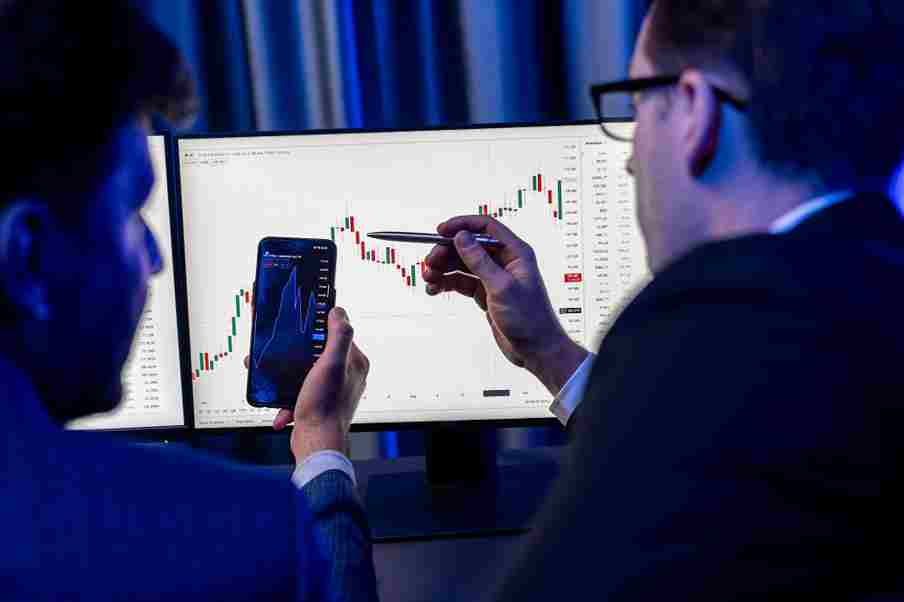The forex market is a dynamic and often unpredictable landscape, where understanding market consensus can be the key to successful trading. In this comprehensive guide, we will delve into the concept of forex market consensus, how to gauge it, and practical strategies to leverage it for profitable trading. Whether you’re a seasoned trader or a beginner, this article aims to provide valuable insights to enhance your trading skills.

Introduction to Forex Market Consensus
The forex market, or foreign exchange market, is the largest and most liquid financial market in the world. Unlike stock markets, it operates 24 hours a day across different time zones. One of the critical aspects that traders need to understand is the concept of market consensus. But what exactly is market consensus?
Market consensus refers to the collective sentiment or general agreement among traders and investors about the direction in which a currency pair is likely to move. This consensus is formed based on various factors, including economic data, geopolitical events, and market psychology.
Why Market Consensus Matters
Understanding market consensus is crucial for several reasons. Firstly, it helps traders make informed decisions. Knowing the general sentiment can guide you to either follow the trend or take a contrarian approach. Secondly, market consensus can provide insights into potential market volatility. When there is a strong consensus, the market tends to be less volatile; conversely, a lack of consensus can lead to higher volatility.
Key Indicators of Market Consensus
Several indicators can help traders gauge market consensus:
1. Moving Averages

Moving averages are one of the most commonly used technical indicators. They smooth out price data to create a single flowing line, which makes it easier to identify the direction of the trend. Commonly used moving averages include the 50-day and 200-day moving averages.
2. Relative Strength Index (RSI)
The RSI measures the speed and change of price movements. It oscillates between 0 and 100 and is typically used to identify overbought or oversold conditions in a market. An RSI above 70 generally indicates that a currency pair is overbought, while an RSI below 30 suggests it is oversold.
How to Gauge Market Sentiment
Gauging market sentiment involves understanding the mood of the market, which can be bullish, bearish, or neutral. There are several ways to gauge market sentiment:
1. Sentiment Indicators
Sentiment indicators like the Commitment of Traders (COT) report provide valuable insights into the positions of large traders, hedgers, and speculators. This information can help you understand whether the market is leaning towards a bullish or bearish outlook.
2. News and Social Media
Monitoring news and social media platforms can also provide real-time insights into market sentiment. Traders often react to news events, and social media can amplify these reactions, providing a pulse on market emotions.
Technical Analysis: Reading the Charts

Technical analysis involves studying historical price data to predict future price movements. Here are some essential tools for technical analysis:
1. Candlestick Patterns
Candlestick patterns like Doji, Hammer, and Engulfing provide visual cues about market sentiment. For example, a Doji indicates indecision in the market, while a Hammer suggests a potential reversal.
2. Support and Resistance Levels
Support and resistance levels are critical for identifying potential entry and exit points. These levels indicate where the price tends to find support as it falls and resistance as it rises.
Fundamental Analysis: Economic Indicators
Fundamental analysis involves evaluating economic indicators to understand the intrinsic value of a currency. Key indicators include:
1. Gross Domestic Product (GDP)
GDP measures the economic performance of a country. A growing GDP indicates a strong economy, which can lead to a stronger currency.
2. Interest Rates
Central banks use interest rates to control monetary policy. Higher interest rates generally attract foreign investment, leading to a stronger currency.
Sentiment Analysis Tools

Several tools can help traders analyze market sentiment:
1. Forex Sentiment Indicators
These indicators show the percentage of traders who are long or short on a particular currency pair. For example, if 70% of traders are long on EUR/USD, it indicates a bullish sentiment.
2. Volatility Index (VIX)
The VIX measures market volatility and is often referred to as the “fear index.” A high VIX indicates high volatility and uncertainty, while a low VIX suggests stability.
Using News and Events to Predict Market Movement
News and events play a significant role in shaping market sentiment. Here’s how to use them effectively:
1. Economic Calendar
An economic calendar provides the schedule of upcoming economic events and data releases. Keeping an eye on these events can help you anticipate market movements.
2. Geopolitical Events

Geopolitical events like elections, wars, and trade disputes can have a significant impact on currency prices. Staying informed about global events can give you an edge in your trading strategy.
Risk Management in Forex Trading
Effective risk management is crucial for long-term success in forex trading. Here are some strategies:
1. Use Stop-Loss Orders
A stop-loss order helps you limit your losses by automatically closing a trade at a predetermined price level.
2. Diversify Your Portfolio
Diversifying your trading portfolio can help spread risk. Avoid putting all your capital into a single trade or currency pair.
Common Mistakes Traders Make with Market Consensus

Even experienced traders can make mistakes when interpreting market consensus. Here are some common pitfalls:
1. Overtrading
Overtrading occurs when traders make too many trades in a short period, often based on short-term market fluctuations rather than a solid strategy.
2. Ignoring Risk Management
Failing to implement proper risk management techniques can lead to significant losses. Always use stop-loss orders and never risk more than you can afford to lose.
Successful Trades Based on Market Consensus
1. The Brexit Vote
The Brexit vote in 2016 caused significant volatility in the forex market. Traders who correctly anticipated the outcome and its impact on the British Pound (GBP) were able to make substantial profits.
2. The 2008 Financial Crisis

During the 2008 financial crisis, the US Dollar (USD) strengthened as a safe-haven currency. Traders who recognized this trend early on were able to capitalize on the market consensus.
Conclusion
Understanding and leveraging forex market consensus can significantly enhance your trading success. By combining technical analysis, fundamental analysis, and sentiment analysis, you can make more informed trading decisions. Remember, effective risk management and patience are key to long-term success in forex trading.
FAQs
1. What is forex market consensus?
Forex market consensus refers to the general agreement or sentiment among traders and investors about the direction in which a currency pair is likely to move.
2. How can I gauge market sentiment?
You can gauge market sentiment through sentiment indicators, news, social media, and tools like the Commitment of Traders (COT) report.
3. Why is risk management important in forex trading?
Risk management is crucial to limit potential losses and ensure long-term trading success. Techniques include using stop-loss orders and diversifying your portfolio.
4. What role do economic indicators play in forex trading?
Economic indicators like GDP and interest rates provide insights into a country’s economic health, influencing currency strength and guiding trading decisions.
5. Can I rely solely on technical analysis for trading?
While technical analysis is valuable, it’s best to combine it with fundamental and sentiment analysis for a comprehensive understanding of market conditions.
